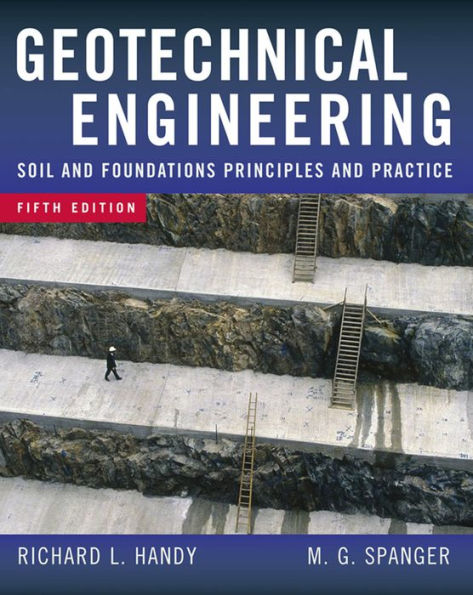Master the Latest Developments in Soil Testing and New Applications of Geotechnical Engineering
Geotechnical Engineering: Principles and Practices offers students and practicing engineers a concise, easy-to-understand approach to the principles and methods of soil and geotechnical engineering. This updated classic builds from basic principles of soil mechanics and applies them to new topics, including mechanically stabilized earth (MSE), and intermediate foundations. This Fifth Edition features:
- Over 400 detailed illustrations and photographs
- Unique background material on the geological, pedological, and mineralogical aspects of soils with emphasis on clay mineralogy, soil structure, and expansive and collapsible soils.
- New coverage of mechanically stabilized earth (MSE); intermediate foundations; in-situ soil testing: statistical analysis of data; “FORE,” a scientific method for analyzing settlement; writing the geotechnical report; and the geotechnical engineer as a sleuth and expert witness.
Get Quick Access to Every Soil and Geotechnical Engineering Topic
• Igneous Rocks as Ultimate Sources for Soils • The Soil Profile • Soil Minerals • Particle Size and Gradation • Soil Fabric and Soil Structure • Soil Density and Unit Weight • Soil Water • Soil Consistency and Engineering Classification • Compaction • Seepage • Stress Distribution • Settlement • Shear Strength • Lateral Stress and Retaining Walls • MSE Walls and Soil Nailing • Slope Stability, Landslides, Embankments, and Earth Dams • Bearing Capacity of Shallow Foundations • Deep Foundations • Intermediate Foundations • Loads on Pipes • In-Situ Testing • Introduction to Soil Dynamics • The Geotechnical ReportMaster the Latest Developments in Soil Testing and New Applications of Geotechnical Engineering
Geotechnical Engineering: Principles and Practices offers students and practicing engineers a concise, easy-to-understand approach to the principles and methods of soil and geotechnical engineering. This updated classic builds from basic principles of soil mechanics and applies them to new topics, including mechanically stabilized earth (MSE), and intermediate foundations. This Fifth Edition features:
- Over 400 detailed illustrations and photographs
- Unique background material on the geological, pedological, and mineralogical aspects of soils with emphasis on clay mineralogy, soil structure, and expansive and collapsible soils.
- New coverage of mechanically stabilized earth (MSE); intermediate foundations; in-situ soil testing: statistical analysis of data; “FORE,” a scientific method for analyzing settlement; writing the geotechnical report; and the geotechnical engineer as a sleuth and expert witness.
Get Quick Access to Every Soil and Geotechnical Engineering Topic
• Igneous Rocks as Ultimate Sources for Soils • The Soil Profile • Soil Minerals • Particle Size and Gradation • Soil Fabric and Soil Structure • Soil Density and Unit Weight • Soil Water • Soil Consistency and Engineering Classification • Compaction • Seepage • Stress Distribution • Settlement • Shear Strength • Lateral Stress and Retaining Walls • MSE Walls and Soil Nailing • Slope Stability, Landslides, Embankments, and Earth Dams • Bearing Capacity of Shallow Foundations • Deep Foundations • Intermediate Foundations • Loads on Pipes • In-Situ Testing • Introduction to Soil Dynamics • The Geotechnical Report
Geotechnical Engineering: Soil and Foundation Principles and Practice, 5th Ed.
904
Geotechnical Engineering: Soil and Foundation Principles and Practice, 5th Ed.
904
Product Details
| ISBN-13: | 9780071508711 |
|---|---|
| Publisher: | McGraw Hill LLC |
| Publication date: | 01/26/2007 |
| Sold by: | Barnes & Noble |
| Format: | eBook |
| Pages: | 904 |
| File size: | 31 MB |
| Note: | This product may take a few minutes to download. |
